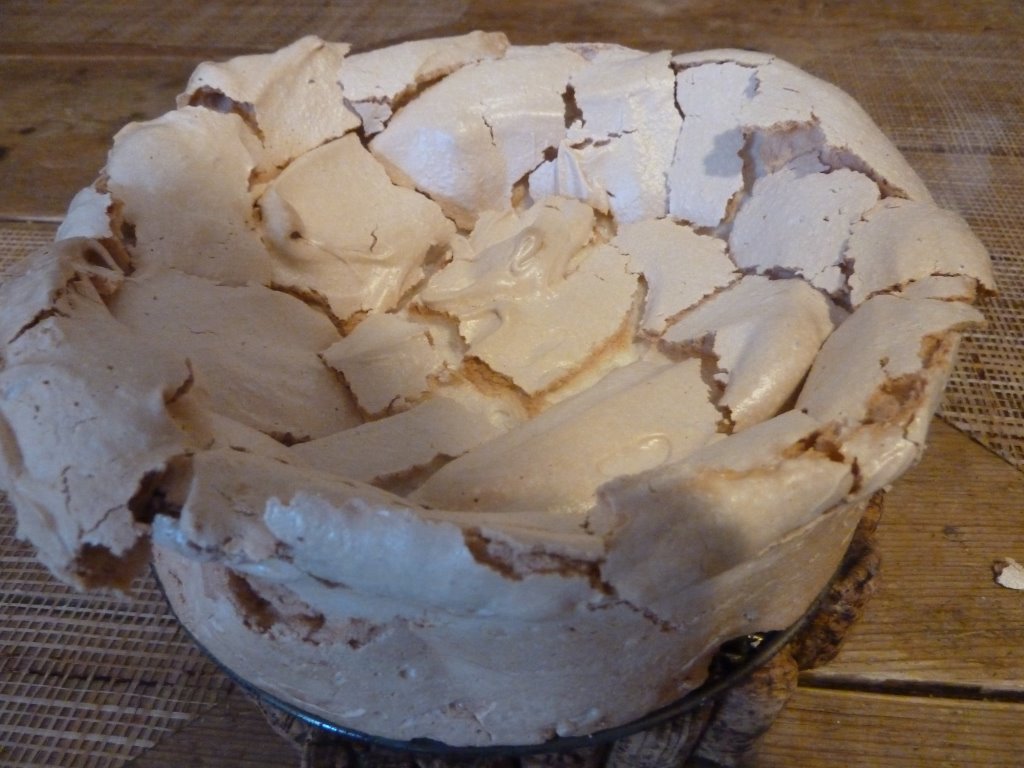Bettymarie's Peach Meringue By Lari Robling
My mother was a terrible cook. I was about eight years old when I realized that calling the fire department wasn't a step in a recipe. Her impoverished cooking skills were always a puzzle because her mother, my grandmother, was an amazing cook. Grog's pies were legendary and people would find a reason to stop by around dinner — there was always enough food in the pot, and enough room around the table to set another place, or two, or even four! Yet, my mother left that home sadly lacking the ability to put a simple meal on the table. Maybe it’s no coincidence that I became passionate about food later in life.
There were, however, one or two things she did learn from my grandmother, and my brother and I were grateful for them. One such confection was a mass of fluffy whiteness covered in whipped topping and decorated with fruit. Despite its light texture, and much to our mother's chagrin, we called it Cement Cake. Although she took this as one of endless insults attached to her skill-less cooking, it was an apt description of what the cake looked like prior to being dressed up with fruit and cream — a cracked sidewalk.
This dessert is Pavlova-like (sometimes called Pavlov), and baked in a spring-form pan rather than laboriously piped out of a pastry bag. Preparing it this way results in a dreamy, marshmallow-like interior encased in a brittle shell.
The original version came from my grandmother's neighbor and called for “tinned peaches.” Over time, we swapped the canned peaches for fresh, or sometimes substituted fresh strawberries or blueberries, or other fruit in season. I've even used kiwi, which adds a nice tart contrast to what is basically a very sweet meringue. But the most exciting version was the one I made with the gooseberries from my backyard bush.
Eventually, the non-dairy whipped topping gave way to whipped heavy cream. And what I’ve learned is that the recipe is almost foolproof, as even my mother could make it reliably.
I was always curious about the origin of this recipe — did some cook lack a pastry bag and plop a Pavlov into a spring-form pan? Was this dish a regional Ohio thing where I was from? I finally found the answer when researching my book, Endangered Recipes and read The Molly Goldberg Jewish Cookbook. There it was — Schaum Torte, a flour-less cake for Passover (that explained the non-dairy topping!).
I wonder how many countless handwritten recipes such as this one were passed over fences or across clothes lines over the years? From neighbor to neighbor, from mother-to-daughter, and now mother-to-son (my son Ben devours it anytime I make this cake), it is a beautiful testament to the nurturing bonds we share.
It’s nice to have a sweet memory of my mother to mollify our sometimes contentious relationship. And I don’t call it Cement Cake any more.










